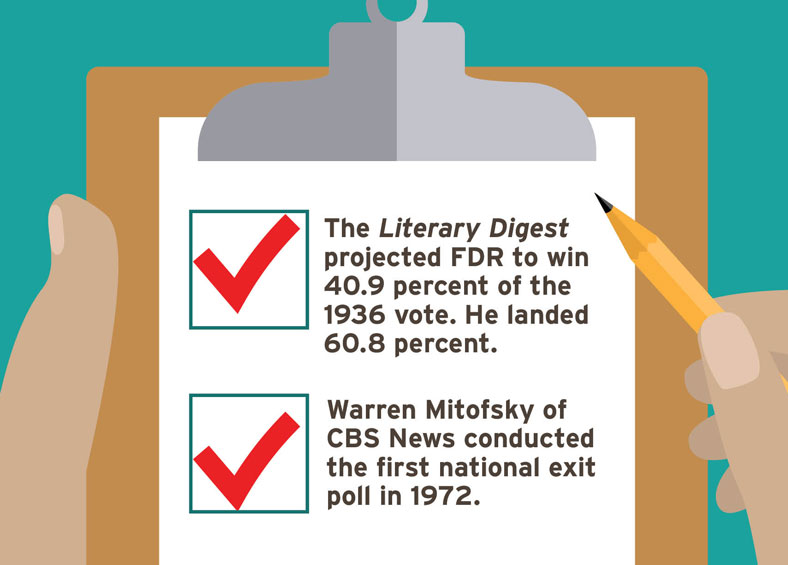
On November 4, 1948, months after his campaign was declared dead, President Harry Truman flashed a lively smile at a St. Louis rally as he displayed a copy of the Chicago Daily Tribune’s infamous headline: “Dewey Defeats Truman.” The iconic photo of the incumbent, whose victory defied pollsters and pundits alike, serves as a reminder of the price of hubris and imprecision in polling, which has been paid many Novembers since.
In the wee hours after another historic upset in 2016, W. Joseph Campbell blogged that, “for American media,” Donald Trump’s win was “like 1948 all over again.” From Trump’s triumph came the idea for the School of Communication professor’s seventh book, Lost in a Gallup, in which he digs into eight voter survey snafus spanning nine decades.
Campbell discovered that while each quadrennial quagmire had its own quirks—like polling ending early in 1980, faulty exit polls in 2004, and substandard state surveys in 2016—they shared common themes. One was an interplay between pollsters and media to shape—occasionally incorrect—election narratives. “Journalists deal all the time with ambiguity,” he says, and thus pre-election data presented as “cold, hard facts” is just catnip.
Another commonality was late-breaking shifts in public opinion. That’s why, even as former vice president Joe Biden’s lead over Trump held steady in mid-October at about 10 percentage points, Campbell urged caution. “Downplaying, but not ignoring, polls and expecting surprise seems prudent—because when polls fail, they can fail in surprising ways.”
Stats on polling
- George Gallup published his first opinion poll in October 1935.
- Warren Mitofsky of CBS News conducted the first national exit poll in 1972.
- The Literary Digest projected FDR to win 40.9 percent of the 1936 vote. He landed 60.8 percent.
- The closest published poll in fall 1980 predicted a 5-point Reagan victory; his margin was 9.7 points.
- Over three days in 2000, Gallup’s polls swung from Gore plus-10 to Bush plus-3.
- FiveThirtyEight correctly predicted 49 states in 2008, 50 in 2012, and 45 in 2016.
- Gallup retreated from presidential polling after 2012.
- Real Clear Politics's final 2016 national polling average was Clinton plus-3.2. She won the popular vote by 2.1 votes.
- In 2016, the Huffington Post pegged the probability of a Hillary Clinton win at 98.2 percent.